K.M. Alexander's Blog, page 41
August 18, 2018
Echoes of the Wasteland
A repository of historical ephemera presented chronologically. There are circumstances still waiting to be discovered for those brave enough to peer around the edges of the world. This reality is faceted; each plane a reflection of corrupted shadow and light. Diligence.
Notice: This cache will be updated as necessary. Click on any image to view it larger.
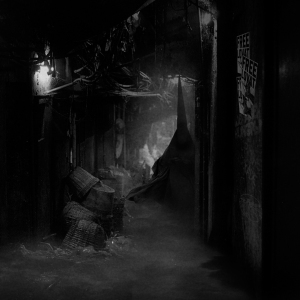

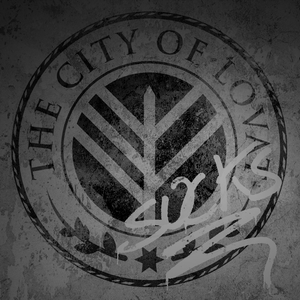
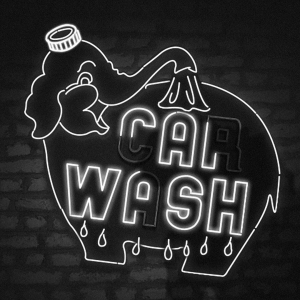


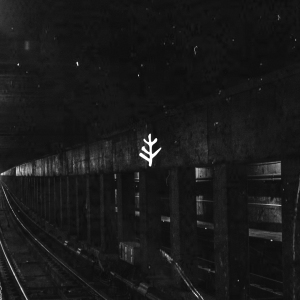
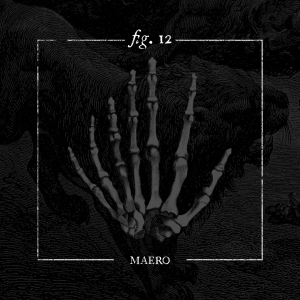

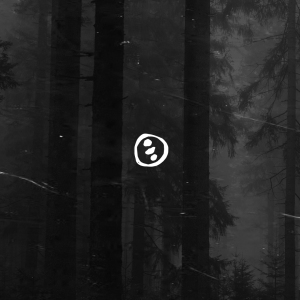
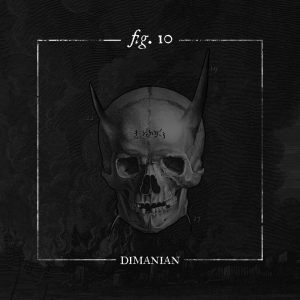



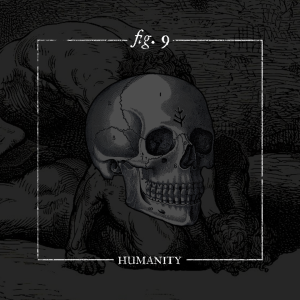
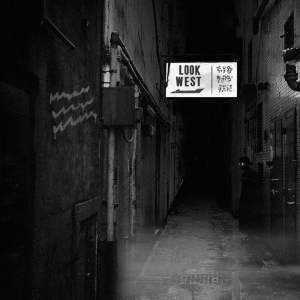
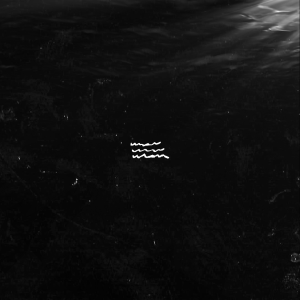
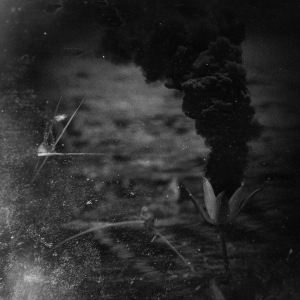
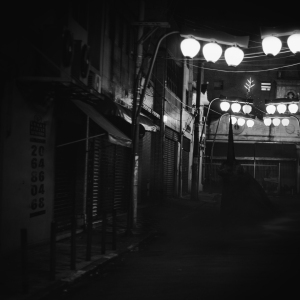
CODA:
Many of these images have been posted on other social media accounts over the last few years and have never fully been assembled into one “master” location. This post has now rectified that oversight and I will continue to update it as necessary. If you’re confused, take heart, my friend, we all begin as colorless novices. I recommend starting here. (Well, start with my books first, then that post.) Ignore the whispers, those are just echoes from the wasteland.
See you soon, roader.
 Want to stay in touch with me? Sign up for Dead Drop, my rare and elusive newsletter. Subscribers get news, previews, and notices on my books before anyone else delivered directly to their inbox. I work hard to make sure it’s not spammy and full of interesting and relevant information. SIGN UP TODAY →
Want to stay in touch with me? Sign up for Dead Drop, my rare and elusive newsletter. Subscribers get news, previews, and notices on my books before anyone else delivered directly to their inbox. I work hard to make sure it’s not spammy and full of interesting and relevant information. SIGN UP TODAY →
August 14, 2018
Farewell Facebook
Today, I clicked delete on my Facebook account. It was a long time coming, and I’m not sad to see it go. Facebook has become a behemoth in the last decade, an irresponsible behemoth that created unethical systems used to preys on its users. Participation felt like a taciturn approval, and I didn’t want to validate that sort of behavior any longer.
For creators, Facebook has changed. A once vibrant landscape has slowly walled creators off onto Pages where our projects and content was no longer seen by the very people who were interested. It began to urging us to “boost posts”—five dollars here or a ten spot there. But boosted posts rarely returned worthwhile engagement. Promoting Pages often yielded poor results—likes and shares from shell accounts generated by click farms. Practices Facebook claims don’t exist, but the evidence says otherwise. I’ve watched friends with thousands and thousands of followers grow frustrated as engagement slipped away and the site became a meaningless money pit.
It was also a distraction. Yet one more place to waste time doing nothing. Over the last few years, I’ve shifted away from social media and doubled down on blogging. I love this blog. Here I control my content. If anyone wants to see what I am working on they just have to visit. I share news, photos, thoughts, and opinions all the time. I get traffic. I get emails from readers. It’s not hidden by algorithms or walled off on some buried Page. It’s all accessible, and that’s glorious. It’s the old web, sure, but it’s reliable.
Things can always change. Microsoft isn’t the same company it was in the 90s. Apple isn’t the same company it was in the late-80s. Facebook ten years from now will be different than it is today. Under new leadership perhaps Facebook could turn things around quickly, but in the meantime, I’m not holding my breath, and I’m not wasting my time. I got books to write.
 Want to stay in touch with me? Sign up for Dead Drop, my rare and elusive newsletter. Subscribers get news, previews, and notices on my books before anyone else delivered directly to their inbox. I work hard to make sure it’s not spammy and full of interesting and relevant information. SIGN UP TODAY →
Want to stay in touch with me? Sign up for Dead Drop, my rare and elusive newsletter. Subscribers get news, previews, and notices on my books before anyone else delivered directly to their inbox. I work hard to make sure it’s not spammy and full of interesting and relevant information. SIGN UP TODAY →
August 10, 2018
The Creative Spirit at Work
I quite enjoyed this delightful little video that accompanied Gareth Smit’s article in the New Yorker regarding “The Odd Literary Paraphernalia of the New York Public Library’s Berg Collection.” It’s worth a watch and a read on a pleasant Friday afternoon.
August 9, 2018
My SPFBO Interview
SPFBO 4 is in full swing. Some folks are advancing already while others have been eliminated. Eventually, the final ten will emerge. It’s been fun watching the community rally and support one another. Yeah, this is an award contest, and we’re all each other’s competition, but it is also very good-natured and encouraging which is really refreshing. We need more of that in the science fiction and fantasy community.
To celebrate the contest, author Michael R. Baker had undertaken a bold quest. He is attempting to interview every one of the three hundred contestants. An admirable and impressive goal. Believe me, I know. Blog posts take a lot of work. Yesterday, it was my turn, and you can read our conversation by clicking on the button below. It was a lot of fun. We discuss my projects, The Stars Were Right, inspiration, the advice I have for aspiring authors, and a whole lot more.
SPFBO Entry Interview: K. M. Alexander
Big thank you to Michael for the opportunity. You can follow him and his crusade at his blog at thousandscarsblog.wordpress.com, and be sure to follow him on Twitter. Likewise, make sure to check out his dark fantasy novel The Thousand Scars—also apart of SPFBO 4.
Good luck to the rest of the entrants! I look forward to reading all of your interviews with Michael in the coming days.

August 8, 2018
They Know It
“People say, ‘What advice do you have for people who want to be writers?’ I say, they don’t really need advice, they know they want to be writers, and they’re gonna do it. Those people who know that they really want to do this and are cut out for it, they know it.”
August 7, 2018
Mapping Resources for Authors (and GMs)
“But I can’t draw…”
How many times have we heard that from our fellow fantasy authors? It’s said when we discuss web design, book cover design, email marketing design, cover design, but it gets said most often when we discuss map designs for our various fantastical projects. Fantasy readers love maps. They draw fan into your world—and while they’re not a requirement, they’ve become expected to some extent.
That expectation is what stresses folks out—but there are solutions out there that can help! There are all sorts of tool that will get you a useful map so you can get back to writing. To help, I’ve put together this post. Here you’ll find all sorts of mapping resource from the simple to the complex. This will not be a definitive guide, merely a handy set of tools I’ve used that might empower you.
If you have a suggestion for a tool I should check out or an article or guide I should read, feel free to leave a comment or send an email to hello@kmalexander.com. I’ll be happy to update the post after I check it out for myself.
Contents
The Lazy Way — Map Generation
The Hybrid Solution — Easy Map Creators
The Time Sink — Making Your Own Maps
Further Resources
The Lazy Way — Map Generation
If you are not picky about your map but want a base to annotate consider one of these free map-generation tools. Please note, most of these are fine for personal use, but you should check their licensing options if you plan on including these in your manuscript. (I highly recommend you hire an illustrator to redraw your map when you get to that point. You’ll get a style that fits your book and you’ll avoid any licensing lawsuits.)
Uncharted Atlas
In-depth mapping generation focus on creating realistic and random landscapes. If you’re not picky, these are an excellent starting point. I highly recommend running through the whole tutorial to see how the process works. Be sure to follow the Uncharted Atlas Twitter account for new maps generated hourly.
Upsides: Unique maps that pay attention to realistic geology
Downsides: Small images, no easy way to download high-resolution files.
Azgaar’s Fantasy Map Generator
In-depth mapping generator that allows for a wide variety of themes and customization. Azgaar has a great blog where he goes into detail about his process, and I’d encourage you to check it out.
Upsides: Loads of customization, download of editable vector .svg files
Downsides: Bit buggy. Occasionally crashes some browsers.
Planet Map Generator
When you’re looking for something a bit larger, this planet map generator helps you expand to a global scale. Simple choose a seed and then customize to your heart’s content.
Upsides: Loads of customization, a lot of customizability
Downsides: Maps can be a little ugly
GM World Map
An expansive generated map that allows for custom levels of zoom. Loads of options and an excellent base for world maps.
Upsides: Lots of random generations make for unique maps, WYSIWYG saving
Downsides: No customizability
Watabou’s Medieval Fantasy City Generator
If you’re looking for generating something a bit smaller than continents or worlds, then this city generator is perfect. It allows for some style customization and a few other little treats.
Upsides: Highly detailed, fun visual customization, WYSIWYG saving
Downsides: Occasional strangeness w/ output. Oddly shaped buildings. No zoom.
The Hybrid Solution — Easy Map Creators
Often, we authors have something particular in mind, and auto-generated maps won’t quite work out for us. But it would be nice to have some sort of program that achieves the style we want without learning cartography. The tools below are designed for just that.
Roll for Fantasy
Using tile-based imagery, this site allows you to create a wide variety of maps. Tiles can be rotated and mirrored creating a lot of customizability.
Upsides: Loads of customization.
Downsides: Maps can be a little plain. Time-consuming.
Inkarnate
This is one of my favorites. Inkarnate lets you draw maps quickly and effectively, and they look good. The Pro account allows for even more customizability.
Upsides: Easy to use. Lots of options.
Downsides: One specific style, it’s a good one, but a limit.
World Spinner
If you want to get into the nitty-gritty of political borders and imperial expansion, then World Spinner (subscription-based) might be the right fit. Plus it includes a neat Heraldry Designer as well.
Upsides: Focus on countries and borders for fantasy. Heraldry designer.
Downsides: Not totally customizable.
The Time Sink — Making Your Own Maps
Sometimes auto-generated images won’t hack it. Either you have a specific world in mind, or you want complete control over the placement of mountain ranges, cities, towns, harbors, and rivers of your world. I get it, I too suffer from that sickness. Thankfully, there’s a lot out there to help make your map be the best it can be.
First, let’s start with some advice…
Crafting Plausible Maps
What does it take to craft a world that feels authentic and realistic? How much of your design will be rooted in fantasy and how much will be based on scientific principles? In this in-depth article, Brandon Kier takes you through the dos and don’ts of fantasy cartography.
Tolkien’s Map and The Messed Up Mountains of Middle-earth
I’ve always felt there’s something a little off about the classic map of Middle-earth. Author and geologist Alex Acks agrees. In this article for Tor.com, he goes into details on the strange geology of Tolkien’s classic.
Fantastic Cartography Tips From the Guy Who Mapped Game of Thrones
Jonathan Roberts has an extensive pedigree when it comes to fantasy cartography. In this quick article for Wired, he discusses the things he keeps in mind as he embarks on each and every commission.
10 Rules For Making Better Fantasy Maps
A map should help enhance your story, and Lauren Davis has ten tips you can use to improve your project.
Now, let’s check out some tutorials…
Fantastic Maps — Map Making Tutorials
Jonathan Roberts (from the Wired article earlier) has a ton of handy guides on his blog—Fantastic Maps. In his posts, he shares how you can quickly sketch out portions of your map using only a pen and paper. Be sure to check out his Tips & Tricks sections.
Ascensions’ Atlas style in Photoshop
This step by step guide is often duplicated and for a good reason. It goes into great detail explaining how you can make a custom and unique atlas-style map for your setting.
Learn to Draw a Stunning Map Using Photoshop
Over at the World Building School, Nathan Smith goes into detail about how he creates a stylized map using Photoshop.
A Magical Society: Guide to Mapping
The key here is plausible worlds. This free downloadable PDF goes into great detail on constructing a map that feels realistic. The art is up to you, but the planning is solid.
This is a time-consuming process, and to create something memorable it’ll take a lot of trial and error. Especially if you’re just starting out. But the end result is something that fits your vision perfectly. Plus, like generated maps, there’s always the option of hiring an illustrator to redraw your creation. Just make sure to get those core ideas down on paper.
Further Resources
If you are looking for additional help. Here are a few more resources for you to explore.
Making Magnificent Mountains
A free Adobe Illustrator or Photoshop brush set I created which allows you to recreate hachure-style mountains to lend a turn-of-the-century feel to your maps.
r/Mapmaking
Reddit’s map making subforum has a ton of great advice and a lot of inspiration. While you’re at it make sure to check out their Mapmaking Wiki. It’s basically this post but with a ton more tools listed.
Cartographers Guild
This online community has been around for a long time and has a ton of great members who are happy to share process, tips, tricks, and tools with the community. It’s also a great place to look for illustrators that can turn your sketches into a work of art.
Old Maps Online
Inspiration can come from anywhere. This handy site allows you to zoom into specific areas on the map and find old maps related to that area. Never know what cool stuff you’ll stumble across.
This is just a small list of tools I’ve tried and liked. There’s a variety of sites and programs out there for a variety of authors and more coming along each day. As with everything, map creation is about finding the tool that works for you, fits your vision, and keeps you writing. As I mentioned in the beginning, if you have a site or resource you like that’s not on this list, let me know! I’d love to continue expanding this post.
Now, go make some maps.


August 2, 2018
Monuments to Ourselves
Which is the truth, the biography or the autobiography? Certainly, one could argue that both are true, but both are often quite contradictory of the other. Two people can experience the same event and come away with a different understanding. The same goes for how we perceive ourselves and how others perceive us. One’s own perception isn’t necessarily truth. Everyone is the hero of their own story, and few see themselves as a villain. We build monuments to ourselves, not acknowledging that our sole perspective on what is right, just, and correct is tainted by our own personal history, experience, and emotion.
Lately, I’ve been thinking about the concept of personal and external perception within the age of social media. The curated life has become commonplace. We architect a presence online as an extension of our personal brand. We mold it to present ourselves a certain way. It’s not just artists, personalities, and celebrities: everyone does it. Are our lives always the brightly lit brunch photos, snarky tweets, smile-filled vacation pictures, reshared articles, and moody black-and-white urban landscape? We curate reality, sculpting ourselves as we would like to be seen—we write an online autobiography in posts, tweets, snaps, grams, and selfies—but is that the truth?
Often we’ll hide blemishes and strive to present ourselves without scars. We’ll argue, insult, defend, mock, pressure, praise, congratulate, and compliment, all in an attempt to manipulate reality for our comfort. It is the defense of our truth, our castle doctrine of individuality. Given a chance, we’ll dictate others perceptions. I’m not that way, I’m this way. See? Look here. Look how happy I am, we’ll say. Look how sophisticated. Look how woke. Look how outrageous. Look how indifferent. Look how successful. Look how offensive or offended. Look how cool and chill. Look how thoughtful and considerate. Look. Look. Look.
What if someone’s perception differs? What if they look but see something else? What if they reject our perceptions? What if they see something other than our desired presentation? What if the monument is cracked and tarnished? What if the biography tells a different story from the autobiography? Does that make it any less correct? Does that make it any less true?

August 1, 2018
The SPFBO 99¢ Fantasy Book Sale
Today, August 1st which marks the beginning of the 2018 Self-Published Fantasy Blog-Off and to celebrate the kickoff many entrants are offering our books on sale for only 99¢!
The Stars Were Right is a part of this year’s entrants, and I was happy to participate in the sale. So if you’re looking for a genre-bending Lovecraftian urban fantasy thriller to sink your… uh, tentacles into for the summer, now is an excellent time to pick it up.
The sale runs August 1st through August 5th, and along with my own book, you’ll find over one hundred twenty others on sale spanning a multitude of fantasy subgenres. It’s a great way to support the participating authors and save yourself some money. You can see the full list by following the link below.
Shop the 2018 SPFBO 99¢ Fantasy Book Sale →
Big thank you to Andrea Domanski for heading this sale up. It’s a lot of work to get this sort of thing off the ground. Make sure to check out her Omega Group book series—the first novel, Crossfire is on sale, and is an entrant in SPFBO 4. It’s currently slated to be reviewed by Lynn’s Book Blog. (You can see the full list over at Mark Lawrence’s blog.)
Welcome to SPFBO 4 everyone, and good luck to the participants.
 Want to stay in touch with me? Sign up for Dead Drop, my rare and elusive newsletter. Subscribers get news, previews, and notices on my books before anyone else delivered directly to their inbox. I work hard to make sure it’s not spammy and full of interesting and relevant information. SIGN UP TODAY →
Want to stay in touch with me? Sign up for Dead Drop, my rare and elusive newsletter. Subscribers get news, previews, and notices on my books before anyone else delivered directly to their inbox. I work hard to make sure it’s not spammy and full of interesting and relevant information. SIGN UP TODAY →
July 24, 2018
Visual Inspiration: Sebastien Ecosse
Recently, as I’ve been ramping up my research for Book IV of the Bell Forging Cycle, I came across the work of illustrator Sebastien Ecosse. It’s no secret that I’m a fan of genre and concept art, longtime readers will immediately understand why Ecosse’s work stands out for me.
I was first drawn in by his landscapes, his cityscapes in particular. They’re layered, rich, and beautifully textured. Places of light and shadows. You can almost feel the humid air against your skin, smell the mix of bizarre aromas, and hear the tapestry of sounds echoing throughout. In many ways, they could be cousins to the megalopolis of Lovat from my novels. With his other work, Ecosse manages to capture a sense of foreboding and dread that lends itself well to horror—in particular, his Lovecraftian work. I’ve posted some of my favorites below, as always you can click to view them larger.
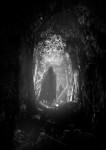


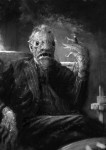



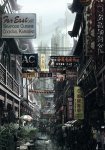

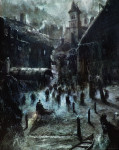
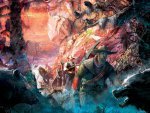

Ecosse has prints available for purchase, and you can see much more of his work over on his website: sebastienecosse.com. You can also find him on ArtStation and Deviant Art. Be sure to check him out on Facebook or over follow him over on Twitter. Perhaps, like me, you’ll find yourself inspired.

July 21, 2018
Trip Report – Whidbey
In celebration of our fifteen-year anniversary, Kari-Lise and I skipped town for a few days and did a bit of exploring in our backyard. Our destination was Whidbey Island, located centrally in the Puget Sound, a short drive north of Seattle.
[image error] I’m a sucker for hand-painted signs and The Captain Whidbey’s didn’t disappoint.
We have been to Whidbey before, usually to hike the always exceptional Ebey’s Landing, but we’ve never spent much time on the island. We wanted to change that and ended up finding a weird 111-year-old inn (yeah, same age as Bilbo Baggins) on Penn Cove called The Captain Whidbey that became our home for a few days.
We came onto the island via the highway that crosses Deception Pass and connects Whidbey Island to Fidalgo Island and the mainland. We hung out there for a few hours and took a quiet walk along the beach before we made our way to the hotel. After settling in, we found ourselves a short drive from Coupeville, a teeny fishing village that has been around since the 1850s. It also resides alongside Penn Cove, and its little waterfront is a great spot to grab a bite, especially if you like mussels and shellfish.
[image error] Deception Pass viewed from Macs Cove on the north side of Whidbey Island
The second day, we walked on the ferry that runs from Keystone Landing to Port Townsend and spent most of the day there. Taking the ferry is a great way to visit the town, which is easily one of my favorite places in Western Washington. A lot of history there, it’s nearly as old as Coupeville and full of ornate Victorian architecture.
At one time there was a hope it’d become the largest seaport in Washington, but today it’s mostly focused on tourism. That said, it’s picturesque, quite chill, and full of places to explore and eat. While there I met an old woman who was sitting outside her apartment listening to a folk band, and she told me how every building in town was haunted and how you can see all the ghosts during thunderstorms because of the static electricity in the air. GHOST SCIENCE.
We returned to Whidbey that afternoon. Right next to the Keystone Landing is Fort Casey, a decommissioned U. S. Army emplacement designed and built to protect the Puget Sound and the Bremerton Navy Yard around the 1890s. The Pacific Northwest is dotted with these little emplacements and they come in all shapes and sizes and in various states of dilapidation. I haven’t seen one as intact and explorable as Fort Casey. Poking around was fun. We climbed ladders, checked out the disappearing guns, and dared ourselves to delve into the deep spaces within the fort that our tiny cell-phone lights couldn’t penetrate.
[image error] Fort Casey huddled behind its bluff
Our last day consisted of exploring a rhododendron forest garden, a little art farm that also sold cheese, and a quiet drive south where we caught the ferry to the mainland. It was a good trip. I read a book, we both relaxed, and we came away knowing Whidbey a bit better. All in all, it was a lovely little flash-vacation, and I’m glad I got to spend it with my favorite person. You can check out a few photos from the trip below.
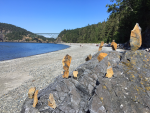

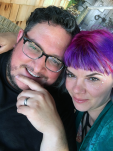





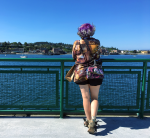

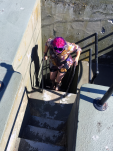

 Want to stay in touch with me? Sign up for Dead Drop, my rare and elusive newsletter. Subscribers get news, previews, and notices on my books before anyone else delivered directly to their inbox. I work hard to make sure it’s not spammy and full of interesting and relevant information. SIGN UP TODAY →
Want to stay in touch with me? Sign up for Dead Drop, my rare and elusive newsletter. Subscribers get news, previews, and notices on my books before anyone else delivered directly to their inbox. I work hard to make sure it’s not spammy and full of interesting and relevant information. SIGN UP TODAY →



